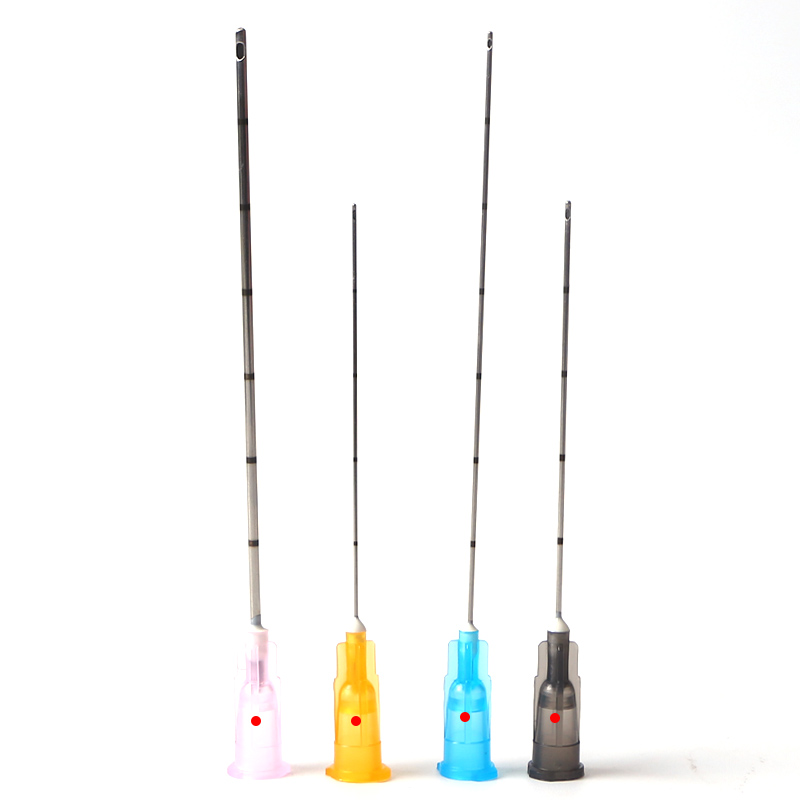Importance of Quality Control in blunt tip needles
In the medical industry, quality control is paramount, ensuring that each blunt tip needle meets the safety and performance standards required for healthcare operations. Manufacturers implement rigorous testing protocols to scrutinize every facet of the needle design and functionality. This process involves assessing the needle's integrity, sterility, and effectiveness in preventing contamination. By adhering to detailed quality control measures, manufacturers aim to reduce risks such as needle-stick injuries and medication contamination, which could have serious consequences for both healthcare providers and patients.
Ensuring Safety and Efficacy
To ensure the safety and efficacy of blunt tip needles, manufacturers might employ sophisticated technological solutions, such as automated inspection systems, which provide a detailed analysis of needle dimensions and potential defects. These systems are capable of detecting deviations as small as 0.001 mm, ensuring that each needle adheres to strict industry standards.
Material Selection for Blunt Tip Needles
Selecting the right material for manufacturing blunt tip needles is essential for ensuring durability and performance. Common materials include stainless steel, known for its strength and resistance to corrosion, and polymers for specific applications requiring flexibility.
Key Material Properties
The choice of material impacts several factors, including the needle's resistance to corrosion, mechanical strength, and biocompatibility. For instance, stainless steel type 316 is often preferred due to its superior resistance to chemical corrosion and tensile strength of approximately 560 MPa, making it ideal for medical use.
Role of Filters in Blunt Tip Needles
Filters play a critical role in maintaining the sterility and purity of medications drawn using blunt tip needles. These filters capture particulate contaminants, which could include glass shards or rubber particles from vial stoppers.
Types of Filters Used
Manufacturers may use filters composed of high-efficiency materials like nylon or polypropylene, known for their durability and capability to trap particles as small as 5 microns. This precision ensures that the medication remains uncontaminated during preparation.
Design Considerations for Blunt Tip Needles
The design of blunt tip needles is meticulously crafted to enhance safety and functionality. Key design elements include the needle's gauge, length, and bevel design, which together influence the needle's performance and ease of use.
Optimizing Needle Design
Manufacturers use precise measurements and advanced technology to perfect the blunt tip design, which typically involves a flatter, rounded end. This design minimizes the risk of piercing skin accidentally while still allowing efficient medication withdrawal from vials.
Manufacturing Standards and Compliance
Compliance with international standards such as ISO 13485 for medical devices ensures that blunt tip needle production adheres to quality management principles. Manufacturers must document every step of the production process, ensuring traceability and accountability.
Regulatory Requirements
Manufacturers must comply with stringent regulatory guidelines to ensure the quality and safety of their products. Compliance is often verified through audits and inspections, focusing on production protocols and product sampling.
Quality Assurance Processes in Production
Quality assurance is a critical component of blunt tip needle manufacturing, focusing on maintaining high standards through systematic checks and testing at various stages of production.
Testing Protocols
Manufacturers implement rigorous testing protocols that include tensile strength tests, sterility checks, and fatigue tests. For example, a typical tensile strength test involves applying a force of up to 10 Newtons to ensure that the needle does not deform under pressure.
Packaging and Sterilization Practices
Proper packaging and sterilization are essential for maintaining the integrity of blunt tip needles. Manufacturers use technologies such as ethylene oxide or gamma radiation to ensure sterilization.
Packaging Techniques
The packaging process is designed to preserve sterility and facilitate easy use. Manufacturers often employ sealed, tamper-evident packaging to protect the needles from contaminants during shipping and storage.
Selection Criteria for Healthcare Providers
When selecting blunt tip needles, healthcare providers consider factors such as needle size, filter efficiency, and compatibility with existing equipment. Manufacturers provide detailed specifications to aid in this selection process.
Decision-Making Parameters
Parameters influencing the choice of blunt tip needles include filter pore size, typically ranging from 5 to 20 microns, needle gauge, and material composition. These factors ensure the best fit for specific medical applications.
Cost-Benefit Analysis for Blunt Tip Needles
Manufacturers conduct cost-benefit analyses to balance quality with affordability. High-quality blunt tip needles may reduce long-term healthcare costs by minimizing risks associated with needle-stick injuries and contamination.
Economic Considerations
Factories evaluate production costs and potential savings from reduced injury rates. For example, investing in better materials can reduce replacement frequencies and associated costs by up to 30%.
Future Innovations in Blunt Tip Needle Manufacturing
With advancements in materials science and engineering, manufacturers are developing new technologies to enhance the functionality and safety of blunt tip needles.
Emerging Technologies
Innovations such as improved filter materials and automated manufacturing processes are poised to increase efficiency and reduce manufacturing defects, setting new standards for the industry.
conpuvon Provide solutions
In the competitive landscape of blunt tip needle manufacturing, ensuring high-quality products through advanced material selection and precise quality control is crucial. Manufacturers committed to excellence continuously optimize their processes, from employing state-of-the-art materials like stainless steel and high-quality polymers to implementing rigorous quality assurance practices. By investing in technology, such as automated inspection systems and enhanced sterilization methods, manufacturers can meet both regulatory requirements and customer expectations, delivering products that ensure the highest levels of safety and reliability in medical applications.

Post time: 2025-07-23 16:17:07













